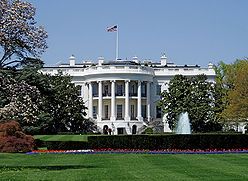Poor Hank Greenberg, the ultra wealthy former CEO of American International Group (AIG), has a sad. As the largest shareholder, he thinks that SIG shareholders got a raw deal when the government saved the company with more than $180 billion in cash. He believes the bailout cost shareholders, like himself, tens of billions of dollars. Unlike the banks, the government set down rules for the loan that forced the company to pay back Wall Street firms.
The trial has a cast of characters reminiscent of the congressional bailout hearings with testimony from former chair of the Federal Reserve, former Treasury Secretaries Timothy Geitner and Henry Paulson.
Secrets of the bailout, exposed: Why you should be watching the AIG trial
By David Dayen, Salon
To this day, information on the banks’ heist and how it went down is pathetically scant. That’s about to change now
The AIG bailout trial began in Washington last week. This is a case where one ruthless, reckless corporate CEO, AIG’s former chieftain Hank Greenberg, argues that his company wasn’t treated as well during the bailout as those of other ruthless, reckless corporate CEOs. So there’s no real rooting interest for anyone with at least one foot planted in reality.
But as I wrote recently, regardless of the outcome, this trial should matter to every American. In fact, just in its first week, we’ve learned a lot of new information about how the bailout architects- then-Treasury Secretary Henry Paulson, ex-Federal Reserve chair Ben Bernanke, and former president of the New York Fed Timothy Geithner – conducted themselves amid the chaos of the financial crisis. And it doesn’t reflect well on any of them, with concealed information, bait-and-switches, and favorites played among financial institutions. As these three prepare to take the stand this week in the case, we should be pleased to finally have this debate about the bailout in public. [..]
We all know the adage that history gets written by the winners. In this case, a very rigid narrative of the bailouts took hold, featuring the swashbuckling actions of governmental leaders who made the hard choices necessary to save the financial system. But because of one ornery ex-CEO, we’re getting another draft of that history, one that displays the bailout as chaotic, selective and in many cases one where laws got thrown out the window and raw power ruled.
As the taxpaying public who fronted the money for all this activity, we should get to know the truth. And the next time the country is faced with such a situation, policy-makers should think twice before heading down the same path, mindful that their dirty laundry will eventually get aired.
POSTSCRIPT: Henry Paulson testified Monday in the trial, confirming the disparate treatment of AIG relative to banks like Citigroup, but saying that circumstances warranted it because those banks were more essential to keeping the financial system afloat. He said that the government had to treat AIG harshly to win political support. (Of course, the government didn’t treat AIG that harshly, gifting them a carryover tax benefit worth $35 billion and letting their executives take bonuses in 2009.) Paulson also acknowledged the private bid for AIG from China Investment Corporation, but asserted that they wouldn’t have followed through on the bid without a government guarantee, even though, he admitted, he never talked to the Chinese.
The best is Jon Stewart’s chastizing Breenberg for being a cry baby.
It would be funny, if it weren’t so ridiculously pathetic.



